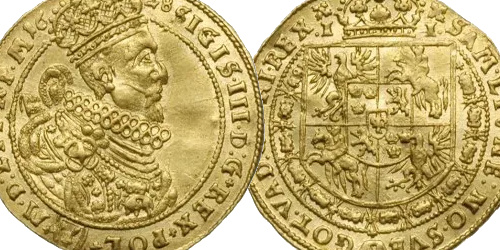After Napoleon broke up Prussia, Danzig was declared a Free City on the basis of the Peace of Tilsit. In April 1808, the city council set the exchange rate of the thaler at 20 sixpence and ordered the city mint to be put into operation. A ban was imposed on the export of silverware and all silver products. The old city foundry at the Kocurka gate was designated as the mint. The original project of minting sixpences and pennies was limited to copper pennies and shekels, which were deemed necessary due to the acute shortage of small circulating coinage. From the original plans, only a trial minting of the sixpence as 1/5 of a guilder was realized. A coin of this denomination was presented to the municipal authorities for approval, which, however, was not obtained. The management of the mint was entrusted to Danzig goldsmith Jan Ludwik Meyer, whose first letter of the last name "M" was placed on the coins. Jan Leonhard Schuler of Berlin became the warden of the mint. Under their direction, the mint was put into operation at the end of 1808, was open throughout the following year and minted shekels and pennies according to the resolution. In 1811 the mint was occupied by the French army and turned into an artillery workshop. After the fall of Napoleon, Danzig lost its status as a Free City, and the mint was closed in 1813, and the city itself became part of Prussia again, based on a decision of the Congress of Vienna.
The coin comes from the legendary Brandt (pictured below left) and Karolkiewicz (right) collections.















